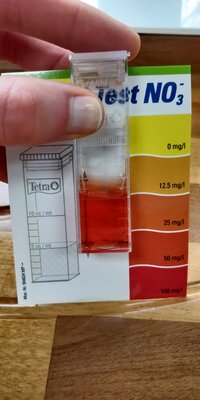Regent
Member
Hi all,
I seem to have some deficiencies developing.. I'm using an all in one ei mix with nitrates at 25ppm, potassium 30ppm, phosphate 8ppm, magnesium 10ppm, iron 0.5 ppm (mix of buffers as my water has a GH of 9.8). Made with acidified DI water one litre lasts two weeks.
Other thoughts, this could be flow related? ( I know there is detritus build up in this area.)
Co2? My drop checker is green sat right by the staurogyne and co2 is going in via a reactor.
This is my staurogyne repens which is demonstrating interveinal chlorosis and I've noticed the same starting on some of the new crypts growth. Not sure what to modify!

However my floaters look pretty good! At least to my eyes..

Any help much appreciated!
I seem to have some deficiencies developing.. I'm using an all in one ei mix with nitrates at 25ppm, potassium 30ppm, phosphate 8ppm, magnesium 10ppm, iron 0.5 ppm (mix of buffers as my water has a GH of 9.8). Made with acidified DI water one litre lasts two weeks.
Other thoughts, this could be flow related? ( I know there is detritus build up in this area.)
Co2? My drop checker is green sat right by the staurogyne and co2 is going in via a reactor.
This is my staurogyne repens which is demonstrating interveinal chlorosis and I've noticed the same starting on some of the new crypts growth. Not sure what to modify!
However my floaters look pretty good! At least to my eyes..
Any help much appreciated!
Last edited:



